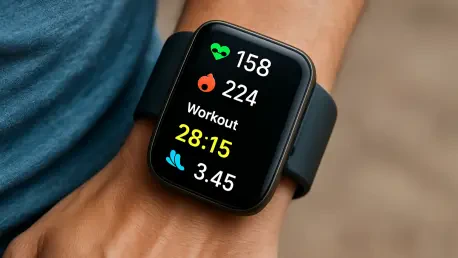I’m thrilled to sit down with Oscar Vail, a renowned technology expert whose passion for innovation has kept him at the forefront of emerging fields like quantum computing, robotics, and open-source projects. Today, we’re diving into the exciting world of wearable tech, focusing on a major update from a leading brand in fitness devices. Oscar will share his insights on the latest advancements in smartwatches and cycling computers, exploring how these updates enhance user well-being, improve performance tracking, and integrate cutting-edge features like 3D mapping and real-time data analysis. Let’s get started!
How do you think major updates like the recent one for smartwatches and cycling computers reflect the evolving needs of users in the fitness tech space?
I believe these updates are a direct response to how connected and data-driven users have become. People aren’t just looking for a device to track steps anymore; they want a comprehensive tool that helps them understand their health and optimize their performance. This latest release, covering devices like smartwatches and cycling computers, shows a clear focus on personalization and actionable insights. From health monitoring to tailored cycling prompts, it’s about empowering users with information they can use in real time, whether they’re casual fitness enthusiasts or serious athletes.
Can you break down the new health monitoring feature on smartwatches and explain how it can impact a user’s daily life?
Absolutely. The new “health status” feature is a game-changer for long-term well-being tracking. It looks at metrics like heart rate, heart rate variability, respiration, skin temperature, and even blood oxygen levels during sleep. By analyzing trends in these stats, it can flag potential stress or fatigue early on. For a user, this means catching signs of overtraining or illness before they become serious issues. It’s like having a personal health coach on your wrist, nudging you to rest or adjust your routine based on what your body is saying.
Where can users access this health data, and how user-friendly is it to interpret?
The data is accessible both on the smartwatch itself and through the companion app, which syncs everything for a deeper dive. On the watch, you get a quick snapshot—think of it as a daily summary of how you’re trending. The app, on the other hand, offers detailed graphs and explanations, making it easier to spot patterns over weeks or months. It’s designed to be intuitive, even for someone who isn’t tech-savvy, with clear visuals and alerts if something looks off.
Shifting to the premium features, what’s your take on the introduction of 3D maps in fitness apps, and how do they enhance the user experience?
The 3D topographic maps are a fantastic addition, especially for outdoor enthusiasts. Unlike standard 2D maps, these give a realistic sense of terrain—hills, valleys, and elevation changes pop out visually. When you’re reviewing a route or planning a trail, it’s much easier to understand what you’re up against. It’s a premium feature tied to a subscription plan, but for hikers, runners, or cyclists who rely on detailed route planning, it adds a layer of clarity and safety that’s hard to replicate with flat maps.
For cycling computer users, there are several new free features. Can you highlight a few that stand out to you and explain their practical benefits?
Sure, the free updates for cycling computers are impressive. The smart prompts for hydration and fueling are particularly useful—they’re tailored to your fitness level, the difficulty of your route, and even weather conditions like heat or humidity. Then there’s the real-time weather overlay, which keeps you updated on changing conditions mid-ride. These features aren’t just nice-to-haves; they help prevent dehydration, fatigue, or getting caught in bad weather, ultimately making rides safer and more efficient.
One intriguing addition is the gear ratio analysis for cyclists. Can you explain how this works and who it might benefit most?
Gear ratio analysis is all about optimizing how you use your bike’s gears. It looks at your pedaling data and suggests adjustments to improve efficiency or power output. For instance, it might show you’re grinding too hard in a high gear on climbs, which wastes energy. This is huge for performance-focused riders who want to fine-tune their technique, but even beginners can benefit by learning how to shift smarter. It’s a tool that grows with you as your skills improve, making it accessible yet deep for analysis.
What’s your forecast for the future of wearable fitness tech, especially with features like real-time data and personalized insights becoming more common?
I think we’re just scratching the surface. The future of wearable fitness tech will likely focus on even deeper integration of AI to predict health trends and performance outcomes with uncanny accuracy. Imagine a device that not only tracks your stats but anticipates when you’re at risk of injury or burnout and adjusts your training plan on the fly. We’ll also see more seamless connectivity—think wearables syncing with smart home devices or even medical systems for a holistic health picture. The goal is to make these tools not just reactive, but truly proactive, acting as a lifelong health partner.









